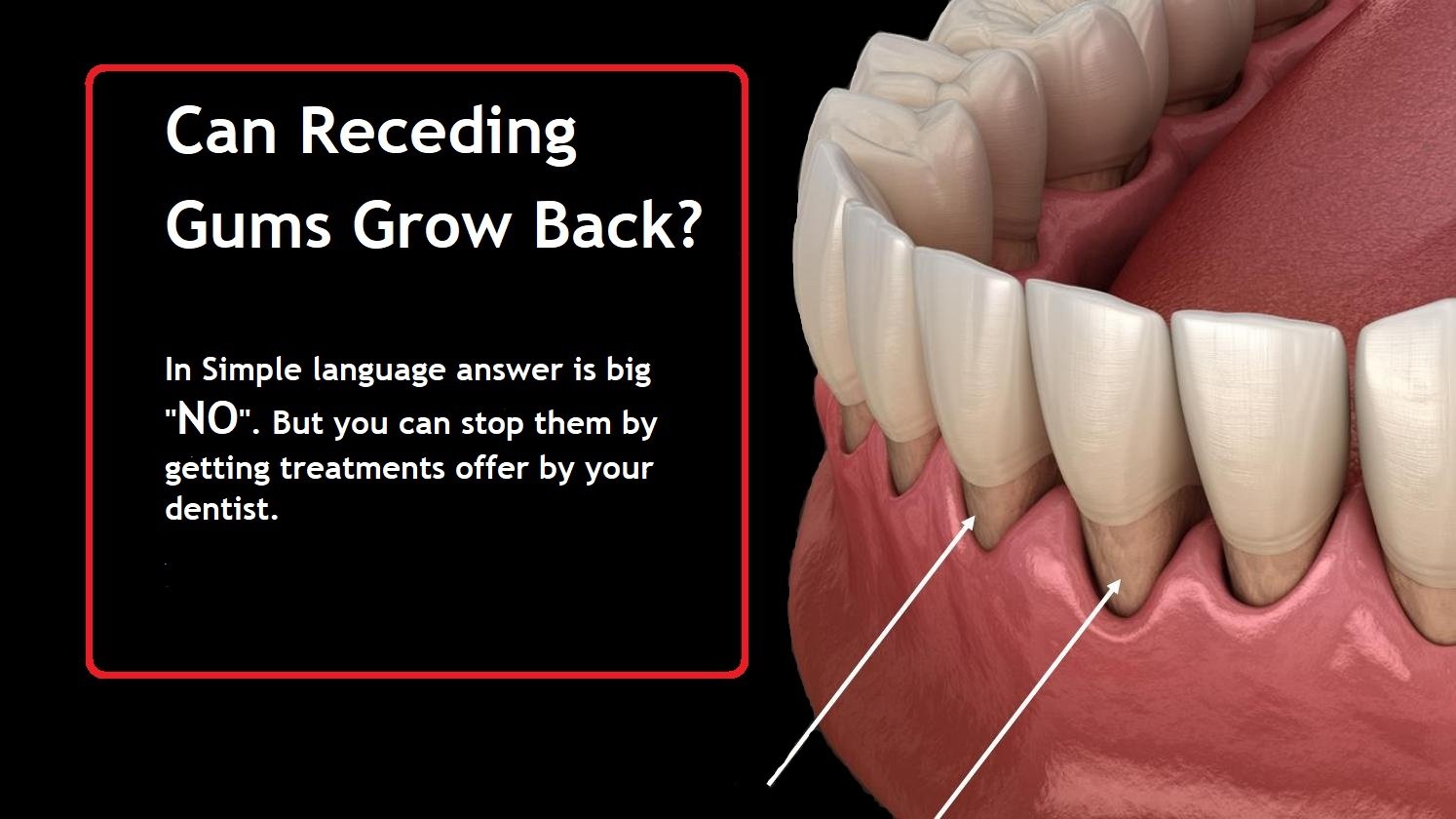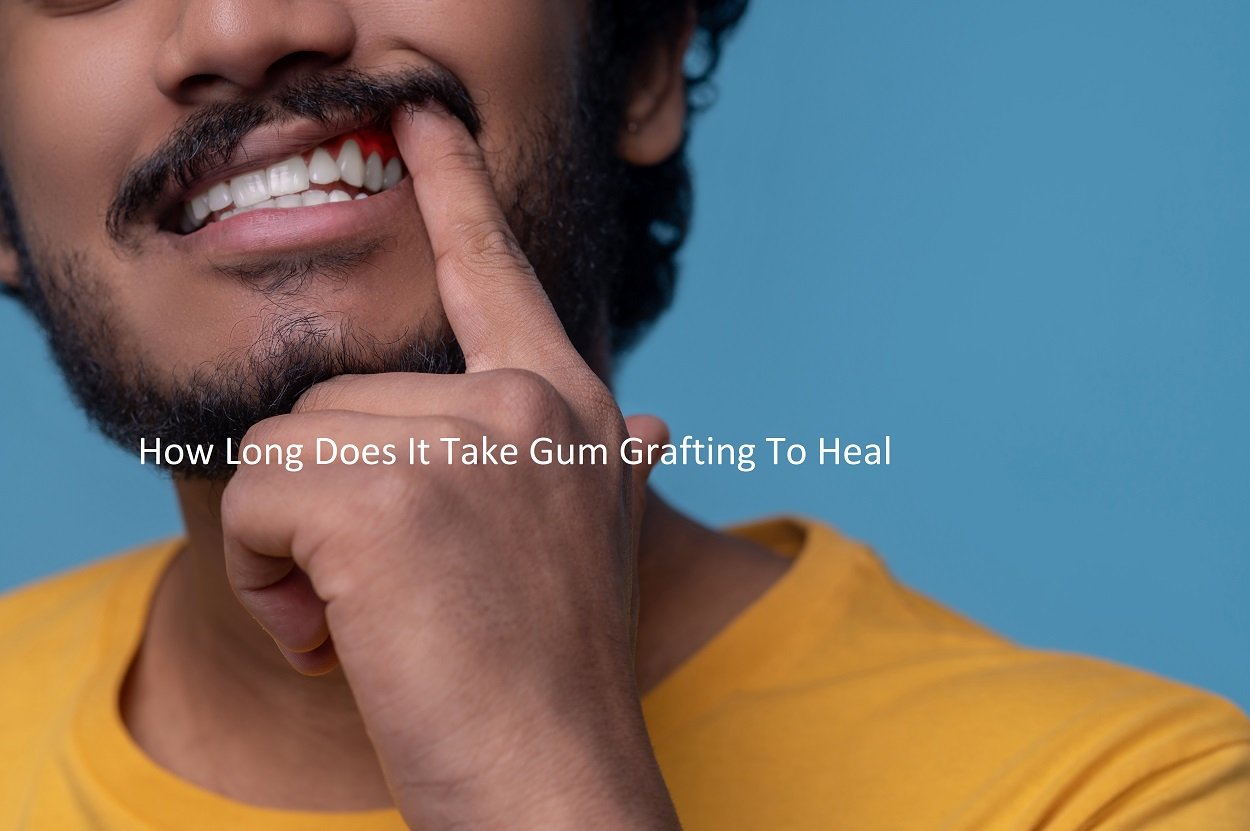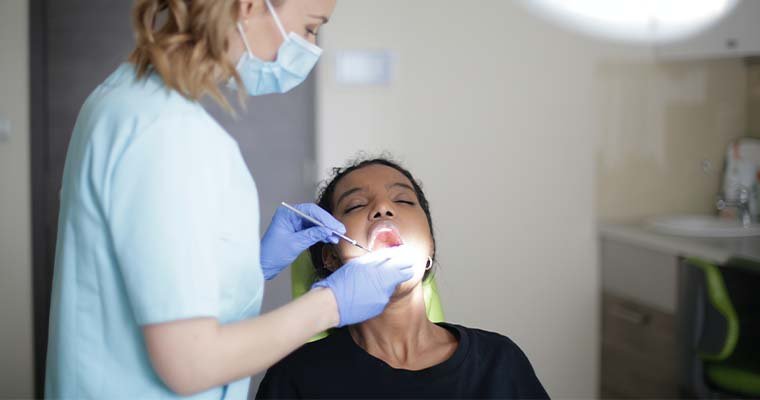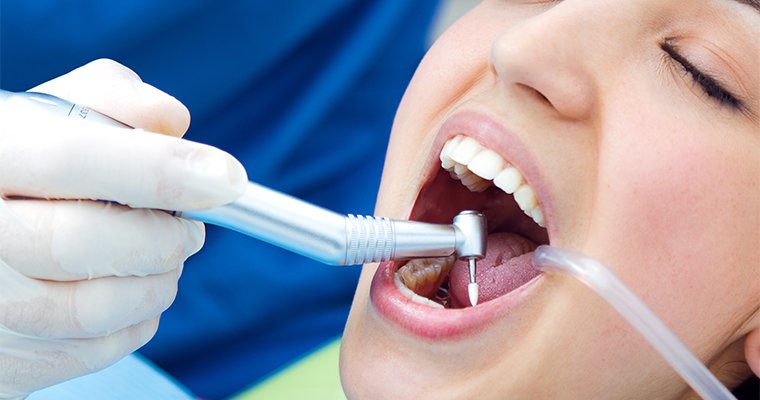How to stop receding gums from getting worse
Do you notice your teeth are longer than usual? If yes, you may have receding gums issues and need a dentist. Gums receding is a common oral issue; if you notice receding gums symptoms, it is better to treat it. Gums recession can cause sensitivity and sometimes lead to tooth loss. Receded teeth look long, which means that the gum has already receded.
Many people experience gum-receding problems. The main reasons for receding gums are over-brushing, gum disease, bruxism, and genetics. The main issue that leads to gum recession becoming more severe is that it is a gradual condition that patients don’t even realize they have until they visit a dentist.
Noticing your gums to wear away or pull back, you must take action and stop receding gums from getting worse.
What causes gum recession?
Gum disease, which is infected, can eliminate the gum and bone with time and can lead to tooth loss. There are many causes why gums recede, including the following:
- Most gums start receding when you age; aging can also be a factor in gum loss. Aged people experience higher rates of gum disease and many other oral health issues which cause the gum lines to recede.
- Periodontal disease is a gum disease that causes gum infection and eliminates gum tissue and the bone that supports the teeth. It can also be the leading cause of gum recession.
- People with crooked teeth or poorly-aligned bites can also suffer gum-receding problems.
- When overbrushing or brushing too hard can cause gums to recede over time.
What do receding gums look like?
Receding gums can be identified by looking at your teeth’ structure and the gum tissues around each tooth. If you see that the gums around your teeth are red or worn away, then the gums are receded.
If you notice that your teeth are long, you look at receding gums. Receding gums can easily be identified by:
- Longer Teeth
- Tooth Sensitivity
- A gap in Gum Line
What causes receding gum lines?
You may not have control over some factors that lead up to gum recession, but there are some other factors that you can take care of and slow the receding gum line.
Poor Oral Hygiene
Do you know that the problems in your mouth can affect your oral health and body? Not brushing your teeth regularly and properly indicates poor oral hygiene, and that causes the buildup of plaque and tartar. The buildup of plaque and tartar provides the bacteria with enough nutrition to multiply and reside easily.
Use of Tobacco Products
People who chew tobacco or smoke are more likely to develop issues like receding gums. Tobacco use builds up a sticky film called plaque on the teeth.
Removing this plaque becomes difficult, and if it is left to harden into the calculus that is tartar, then a professional dentist can only remove it. When this tartar is left to build up, it can lead to gum recession.
Brushing Technique
Improper brushing techniques or stiff bristle brushes can cause gum recession. Soft brushes are recommended as hard brushes can wear off the tooth enamel, causing cavity development and leading to gum recession.
Why is my gum line receding?
Gum line receding can happen for many reasons; one reason is certain medications cause dry mouth, which raises the risk of receding gumlines. When your mouth is dry, you have less saliva than you should have, which leads to more bacterial infections.
However, the receding gum line concern is typical in adults 40 years and older. The gum needs strong and healthy tissue to support and protect your gum tissue from wear down.
What can be done for receding gums?
Once you have noticed your receding gums, the best you can do is consult your dentist and have treatment for receding gums. Your dentist will determine the infection caused to your gum line to fix and reduce the disease.
Dental cleaning
If you have mild gum recession, your dentist will perform a deep cleaning to reduce the infection.
In this procedure, the dentist cleans the impacted area carefully and removes the deposition of any plaque and tartar buildup on the roots of your teeth under the gumline. The deep cleaning procedure is also called root planning and tooth scaling.
In this process, the dentist smoothes down the exposed roots of the teeth to stop the bacteria from attaching to the teeth’ surface and making them infection free. Your dentist may also specify some antibiotics to reduce the bacteria buildup.
How to treat receding gums?
When receding gums are not treated, they may lead to tooth loss, so when you notice receding gums, you should visit your dentist. Scaling and root planing is known as deep cleaning in dentistry, and this method removes the hard substance that sticks to your teeth.
Receding gums treatment procedures are as follows:
Root Planning and Scaling
Root planing and scaling is a deep dental cleaning procedure that cleans your teeth and removes plaque and tartar. Your dentist pulls back the impacted gums, tends the tooth’s roots, and places it back securely, eliminating the existing pockets in the gum line.
Surgery
Surgery is generally required when there is no other option left to treat the gums when your gums already have pockets or deep pockets, or there is already a loss of too much bone; in this situation, a deep cleaning process will not work to treat the gum recession, and you will need surgery to treat the gums.
Depending on the severity of your gum recession, there are several possible types of surgery.
Many people experience gum recession, but I healed my receding gums.
Grafting of gums
Gum Grafting is a procedure in which the dentist removes the healthy tissues from the top surface of the mouth and places them in the affected area where gums are receded.
With this procedure, your thin gums become healthy again, covering the exposed tooth roots. Recovery usually takes one to two weeks, but it may take longer, depending on case severity and the care you take.
Gum grafting reduces the risk of severe gum diseases.
How to fix a receding gum line?
To fix receding gum lines, dentists usually perform a deep cleaning process. Still, if the recession of your gums has worsened and the pockets are deep, then a deep cleaning will not be enough. You will need a surgical procedure such as root planing and scaling or regeneration; you may need both to fix infected gums.
Can receding gums grow back?
Many people have questions about whether receding gums grow back, and the simple answer is no. Once your gums are damaged by severe gum disease, there is no possible chance of growing back, and a receded gum line can only be stopped from getting worse. Many gums-receding treatment options can fix the issue but can’t grow gums back.
Gum tissue doesn’t restore the way other tissue, like your skin. So, once gums are receded, they don’t grow back.
Receding gum on one tooth
What should I do if my gums are receding on one tooth? Are you also facing this problem?
You may come up with such a problem when you have receded gums.
The Symptoms of receding gum on one tooth may be,
- Sensitivity in teeth, especially the affected tooth.
- The single tooth looks longer than other teeth.
- Gum bleeding
- Red and swollen gums.
If the recession has advanced, you may see a loose tooth. Consult your dentist in that case.
Gum recession is a dental disease involving all or most teeth and one tooth.
Treatment for receding gums
Receding gums treatment can help to keep the gums from getting worse. The treatment options usually depend on the gum problem you own. Sometimes harsh brushing and poor dental hygiene can lead to gum diseases and other oral health issues.
Poor brushing and flossing habits can build up the plaque between the teeth and can cause gums to recede. It would help if you used a dental flosser to keep your mouth clean and visit your dentist every 6 months to maintain good oral hygiene.
You need a deep dental cleaning treatment called scaling and root planing. The dentist removes plaque and tartar to treat gum recession with this procedure. Your dentist cleans the tartar and plaque from the surface of your teeth and the roots of your teeth, making the infection of the gum accessible.
Conclusion:
Consult your dentist if you feel sensitivity or see bleeding gums. If you don’t notice pain or sensitivity and some changes in your gums and teeth, consider your dentist if your gums are receding.
If left untreated, gum recession can eventually cause bone and tooth loss. Visit your dentist once every six months; this will help your dentist notice any oral health concerns and the risk of receding gums and gum ailments. And you can proudly say that I healed my receding gums.
Read more: How Long Does A Dental Cleaning Take?
You May Also Like

Do you experience pain while practising dental hygiene? Or do you have red & swollen gums that produce pain? This condition might be receding gums....
Read More
Are you a suitable candidate for gum graft surgery? If you are suffering from gum recession, you must need gum graft surgery to fix the...
Read More
The inflammation of the gums causes gum disease, and the beginning of Gum Disease is called gingivitis. If you have a firm texture and a...
Read More
A periodontist is a specialist who treats, prevents, and diagnoses issues that affect your gums and the bones in your mouth. They help in decreasing...
Read More
